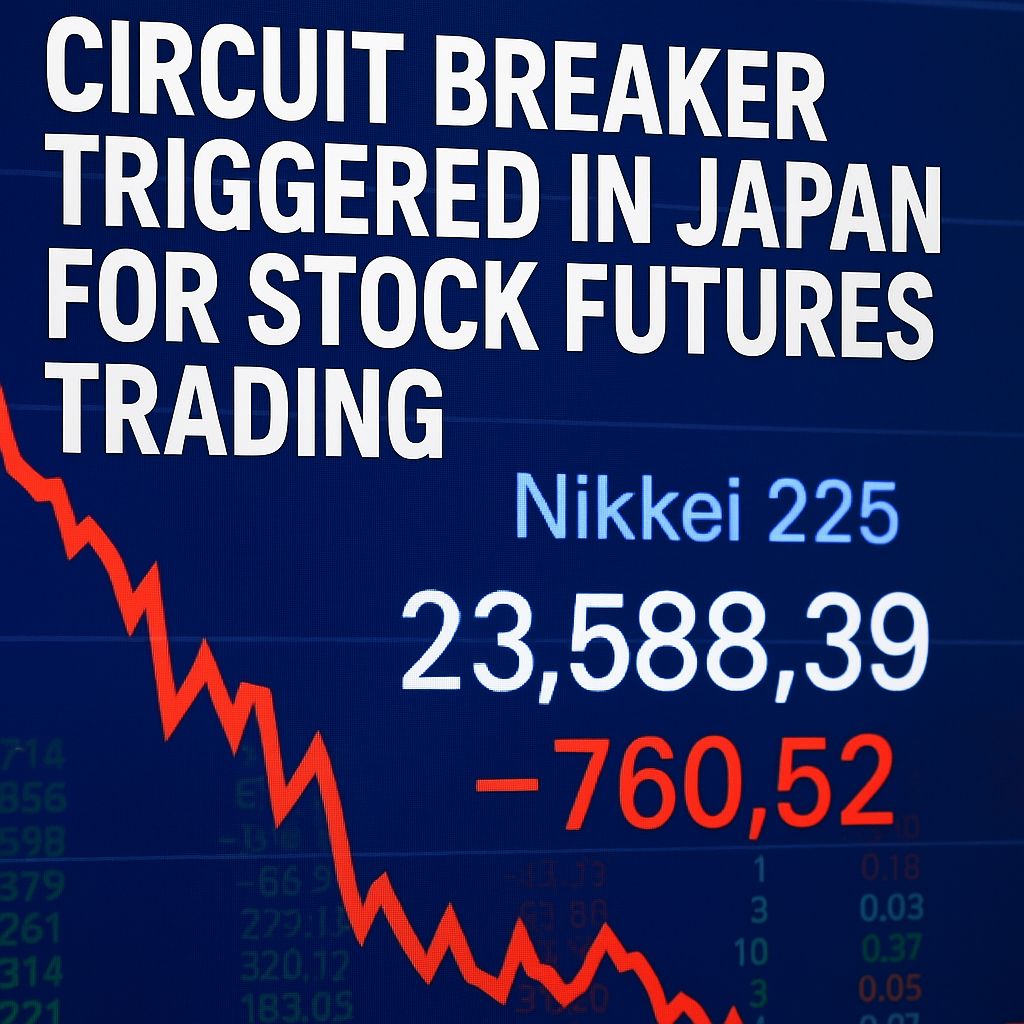In August 2024, Japan’s financial markets experienced a rare and dramatic event that reverberated across global exchanges: a circuit breaker was triggered in stock futures trading. This mechanism, designed to prevent panic-driven market crashes, temporarily halted trading as the Nikkei 225 index plummeted, signaling deep investor unease. This article explores the causes behind the event, the mechanics of circuit breakers, the global impact, and the potential implications for investors and regulators.
Understanding Circuit Breakers in Financial Markets
Circuit breakers are essential tools for modern stock exchanges, aimed at reducing excessive market volatility. When prices drop (or rise) too sharply in a short period, a circuit breaker halts trading temporarily. This pause allows market participants to digest information, reassess their strategies, and prevent emotionally driven sell-offs or buying frenzies.
In Japan, the Japan Exchange Group (JPX) employs circuit breakers specifically for derivatives like stock index futures. Under normal conditions, the price limit for Nikkei 225 futures is set at ±8%. If this threshold is breached, trading is halted, and the limit range is expanded to ±12%. A second breach can extend the limit to ±16%.
The Trigger Event: What Happened in Japan?
On August 5, 2024, the Nikkei 225 index fell by a staggering 12.4%, marking its steepest single-day drop since the Black Monday crash of 1987. This sudden plunge triggered the first-level circuit breaker, temporarily suspending trading in Nikkei 225 futures. The following day saw a dramatic rebound of 10.2%, highlighting the extreme volatility and uncertainty gripping investors.
Several contributing factors led to the crisis:
- US Recession Concerns: Economic indicators pointed toward a looming recession in the United States, causing a ripple effect across global markets.
- Interest Rate Hike by BOJ: The Bank of Japan surprised markets with a significant interest rate hike, breaking a long-standing policy of near-zero interest rates. This unexpected move rattled investor confidence.
- Yen Carry Trade Unwinding: Investors who had borrowed in low-interest yen to invest in higher-yielding assets began unwinding their positions, leading to a surge in the yen’s value and a drop in equity prices.
Global Fallout and Market Reaction
The turmoil in Japan’s markets was not isolated. Major global indices also suffered significant losses. The S&P 500 dropped by 3%, and the Nasdaq fell by 3.4% on the same day. Markets in Europe and Asia mirrored the sharp declines, underlining how interconnected today’s financial systems are.
The circuit breaker served its intended purpose: it prevented a further spiral of panic selling and allowed traders to reassess their positions. However, the magnitude of the drop raised questions about the resilience of current market structures.
IMF and Analyst Warnings
Following the event, the International Monetary Fund (IMF) issued a warning that the August sell-off could be a precursor to more serious financial instability. The IMF noted a growing disconnect between investor sentiment and underlying economic realities, cautioning that similar shocks could trigger renewed market chaos.
Analysts echoed this sentiment, stating that although circuit breakers offer short-term relief, they do not address the root causes of market volatility. Many emphasized the need for stronger risk management strategies, diversified portfolios, and enhanced transparency from central banks and financial institutions.
Government and Regulatory Response
Japanese Prime Minister Fumio Kishida responded promptly, urging calm and pledging government support for market stability. The Financial Services Agency (FSA) and Bank of Japan also issued statements to reassure investors, stressing that Japan’s economic fundamentals remained strong despite short-term volatility.
Some policymakers proposed reviewing existing circuit breaker mechanisms to ensure they remain effective under extreme conditions. Others suggested developing new tools to detect and mitigate systemic risk before such dramatic market movements occur.
Implications for Investors
For investors, the event was a stark reminder of the risks inherent in modern financial markets. Here are several takeaways:
- Diversification is Key: Spreading investments across asset classes and geographies can reduce exposure to localized shocks.
- Stay Informed: Keeping up with macroeconomic developments and central bank policy changes is essential for anticipating market shifts.
- Understand Market Mechanisms: Knowing how circuit breakers and other trading safeguards work can help investors make better decisions during times of crisis.
- Have a Long-Term Perspective: Markets can be volatile in the short term, but a long-term approach tends to yield more stable returns.
Lessons for the Future
The August 2024 event in Japan was a wake-up call for investors, regulators, and policymakers alike. It demonstrated both the strengths and limitations of circuit breakers. While they can provide a temporary pause and help restore order, they are not a cure-all. Deeper structural reforms may be needed to improve market resilience in an era of heightened global uncertainty.
Furthermore, the incident highlights the importance of global coordination. Given the interdependence of financial markets, shocks in one region can quickly cascade across the globe. A coordinated response from central banks, regulatory bodies, and international institutions may be necessary to manage future crises effectively.
Conclusion
The triggering of a circuit breaker in Japan’s stock futures market in August 2024 stands as a significant moment in recent financial history. It revealed vulnerabilities in the system, underscored the importance of investor awareness, and emphasized the need for stronger global financial governance. As markets continue to evolve, events like these serve as critical reminders of the ever-present need for vigilance, adaptability, and informed decision-making.
